5-Bromonicotinoyl chloride
Modify Date: 2025-08-23 11:06:25

5-Bromonicotinoyl chloride structure
|
Common Name | 5-Bromonicotinoyl chloride | ||
|---|---|---|---|---|
| CAS Number | 39620-02-5 | Molecular Weight | 220.451 | |
| Density | 1.8±0.1 g/cm3 | Boiling Point | 265.4±25.0 °C at 760 mmHg | |
| Molecular Formula | C6H3BrClNO | Melting Point | 72-74°C | |
| MSDS | Chinese USA | Flash Point | 114.3±23.2 °C | |
| Name | 5-bromopyridine-3-carbonyl chloride |
|---|---|
| Synonym | More Synonyms |
| Density | 1.8±0.1 g/cm3 |
|---|---|
| Boiling Point | 265.4±25.0 °C at 760 mmHg |
| Melting Point | 72-74°C |
| Molecular Formula | C6H3BrClNO |
| Molecular Weight | 220.451 |
| Flash Point | 114.3±23.2 °C |
| Exact Mass | 218.908646 |
| PSA | 29.96000 |
| LogP | 2.36 |
| Vapour Pressure | 0.0±0.5 mmHg at 25°C |
| Index of Refraction | 1.590 |
| InChIKey | FMDREJRIXNEGEG-UHFFFAOYSA-N |
| SMILES | O=C(Cl)c1cncc(Br)c1 |
Synonym: Section 2 - COMPOSITION, INFORMATION ON INGREDIENTS
Risk Phrases: 34 Section 3 - HAZARDS IDENTIFICATION EMERGENCY OVERVIEW
Causes burns.Moisture sensitive. Potential Health Effects Eye: Causes eye burns. Skin: Causes skin burns. Ingestion: Causes gastrointestinal tract burns. Inhalation: Causes chemical burns to the respiratory tract. Chronic: Not available. Section 4 - FIRST AID MEASURES Eyes: Immediately flush eyes with plenty of water for at least 15 minutes, occasionally lifting the upper and lower eyelids. Get medical aid immediately. Skin: Get medical aid immediately. Immediately flush skin with plenty of water for at least 15 minutes while removing contaminated clothing and shoes. Ingestion: Do not induce vomiting. Get medical aid immediately. Inhalation: Get medical aid immediately. Remove from exposure and move to fresh air immediately. If not breathing, give artificial respiration. If breathing is difficult, give oxygen. Notes to Physician: Treat symptomatically and supportively. Section 5 - FIRE FIGHTING MEASURES General Information: As in any fire, wear a self-contained breathing apparatus in pressure-demand, MSHA/NIOSH (approved or equivalent), and full protective gear. Extinguishing Media: Use foam, dry chemical, or carbon dioxide. Section 6 - ACCIDENTAL RELEASE MEASURES General Information: Use proper personal protective equipment as indicated in Section 8. Spills/Leaks: Vacuum or sweep up material and place into a suitable disposal container. Section 7 - HANDLING and STORAGE Handling: Do not breathe dust, vapor, mist, or gas. Do not get in eyes, on skin, or on clothing. Use only in a chemical fume hood. Storage: Store in a cool, dry place. Store in a tightly closed container. Corrosives area. Store under nitrogen. Section 8 - EXPOSURE CONTROLS, PERSONAL PROTECTION Engineering Controls: Facilities storing or utilizing this material should be equipped with an eyewash facility and a safety shower. Use adequate ventilation to keep airborne concentrations low. Exposure Limits CAS# 39620-02-5: Personal Protective Equipment Eyes: Not available. Skin: Wear appropriate protective gloves to prevent skin exposure. Clothing: Wear appropriate protective clothing to prevent skin exposure. Respirators: Follow the OSHA respirator regulations found in 29 CFR 1910.134 or European Standard EN 149. Use a NIOSH/MSHA or European Standard EN 149 approved respirator if exposure limits are exceeded or if irritation or other symptoms are experienced. Section 9 - PHYSICAL AND CHEMICAL PROPERTIES Physical State: Crystalline powder Color: pale orange Odor: Not available. pH: Not available. Vapor Pressure: Not available. Viscosity: Not available. Boiling Point: Not available. Freezing/Melting Point: 75 - 76 deg C Autoignition Temperature: Not available. Flash Point: Not available. Explosion Limits, lower: Not available. Explosion Limits, upper: Not available. Decomposition Temperature: Solubility in water: Specific Gravity/Density: Molecular Formula: C6H3BrClNO Molecular Weight: 220 Section 10 - STABILITY AND REACTIVITY Chemical Stability: Not available. Conditions to Avoid: Incompatible materials, exposure to moist air or water. Incompatibilities with Other Materials: Strong oxidizing agents, bases. Hazardous Decomposition Products: Hydrogen chloride, chlorine, hydrogen cyanide, nitrogen oxides, carbon monoxide, carbon dioxide, hydrogen bromide, bromine. Hazardous Polymerization: Has not been reported Section 11 - TOXICOLOGICAL INFORMATION RTECS#: CAS# 39620-02-5 unlisted. LD50/LC50: Not available. Carcinogenicity: 5-Bromopyridine-3-carbonyl chloride - Not listed by ACGIH, IARC, or NTP. Section 12 - ECOLOGICAL INFORMATION Section 13 - DISPOSAL CONSIDERATIONS Dispose of in a manner consistent with federal, state, and local regulations. Section 14 - TRANSPORT INFORMATION IATA Shipping Name: CORROSIVE SOLID, ACIDIC, ORGANIC, N.O.S.* Hazard Class: 8 UN Number: 3261 Packing Group: III IMO Shipping Name: CORROSIVE SOLID, ACIDIC, ORGANIC, N.O.S. Hazard Class: 8 UN Number: 3261 Packing Group: III RID/ADR Shipping Name: CORROSIVE SOLID, ACIDIC, ORGANIC, N.O.S. Hazard Class: 8 UN Number: 3261 Packing group: III Section 15 - REGULATORY INFORMATION European/International Regulations European Labeling in Accordance with EC Directives Hazard Symbols: C Risk Phrases: R 34 Causes burns. Safety Phrases: S 26 In case of contact with eyes, rinse immediately with plenty of water and seek medical advice. S 36/37/39 Wear suitable protective clothing, gloves and eye/face protection. S 45 In case of accident or if you feel unwell, seek medical advice immediately (show the label where possible). WGK (Water Danger/Protection) CAS# 39620-02-5: No information available. Canada None of the chemicals in this product are listed on the DSL/NDSL list. CAS# 39620-02-5 is not listed on Canada's Ingredient Disclosure List. US FEDERAL TSCA CAS# 39620-02-5 is not listed on the TSCA inventory. It is for research and development use only. SECTION 16 - ADDITIONAL INFORMATION N/A |
| Hazard Codes | C:Corrosive; |
|---|---|
| Risk Phrases | R34 |
| Safety Phrases | S26-S36/37/39-S45 |
| RIDADR | 3261 |
| Packaging Group | II |
| Hazard Class | 8 |
| Precursor 4 | |
|---|---|
| DownStream 10 | |
| 5-Bromo-3-pyridinecarbonyl chloride |
| 5-Brom-nicotinoylchlorid |
| 3-Pyridinecarbonyl chloride, 5-bromo- |
| 5-Bromonicotinoyl chloride |
| 5-Bromo-nicotinoyl chloride |
| T6NJ CVG EE |
| 5-bromopyridine-3-carboxylic acid chloride |
| MFCD00173853 |
| 5-bromonicotinic acid chloride |
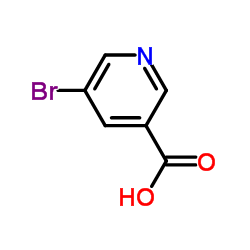 CAS#:20826-04-4
CAS#:20826-04-4 CAS#:59-67-6
CAS#:59-67-6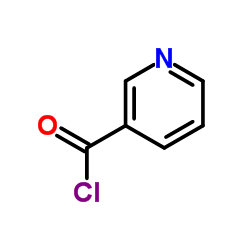 CAS#:10400-19-8
CAS#:10400-19-8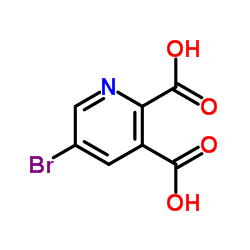 CAS#:98555-51-2
CAS#:98555-51-2 CAS#:342013-78-9
CAS#:342013-78-9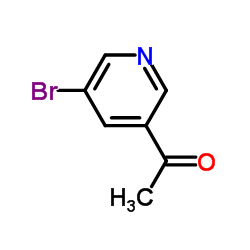 CAS#:38940-62-4
CAS#:38940-62-4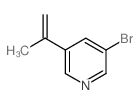 CAS#:40472-88-6
CAS#:40472-88-6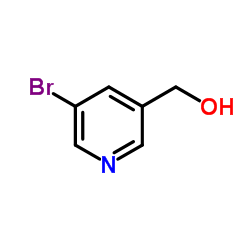 CAS#:37669-64-0
CAS#:37669-64-0 CAS#:303031-43-8
CAS#:303031-43-8 CAS#:292170-96-8
CAS#:292170-96-8![2-[1-adamantyl(methyl)amino]ethyl 5-bromopyridine-3-carboxylate,hydrochloride structure](https://image.chemsrc.com/caspic/229/126999-37-9.png) CAS#:126999-37-9
CAS#:126999-37-9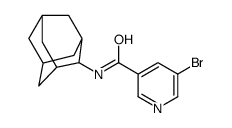 CAS#:126947-71-5
CAS#:126947-71-5 CAS#:126947-72-6
CAS#:126947-72-6 CAS#:10177-13-6
CAS#:10177-13-6